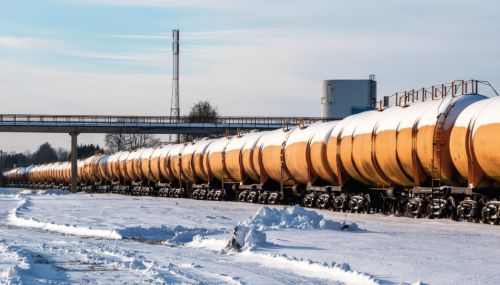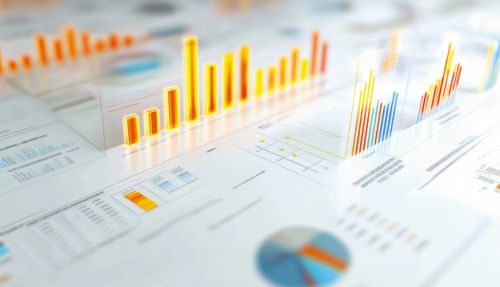All
2022 Hedging Survey

Hedgers confront major market disruptions head-on
There are price spikes and then there are Price Spikes.
As questions were being drafted for Oil & Energy’s 2022 Hedging Survey, heating oil and ULSD prices were notably high and expected to continue their rise. Readers might recall that the U.S. Energy Information Administration’s (EIA’s) October 2021 Winter Fuels Outlook forecast heating oil prices would be 33% higher this year.
Ha!
As responses were coming due for Oil & Energy’s 2022 Hedging Survey, war broke out in Ukraine, sending world energy markets into frenzy. Retail and wholesale heating oil prices, already higher than normal, hit all-time highs (see “Record-High Heating Oil Prices”). The price of crude oil climbed to $130 per barrel at one point. ULSD also explored uncharted territory. Heating oil futures seesawed.
Once again, Oil & Energy asked hedging providers who support the heating fuels market about their thoughts on the current marketplace and prospects for the future. Answering these questions is difficult enough in a “normal” year, whatever that means in 2022. Arriving amid unprecedented market disruptions, this year’s survey truly put respondents to the test. We would like to thank each of the companies that took the time to participate: Aletheia Consulting Group, Angus Finance and Hedge Solutions.
Oil & Energy: This year’s rise in heating oil prices has been attributed to climbing inflation, demand recovery outpacing production, the Russia-Ukraine war, and other factors. However, prices were extremely low during the prior heating season. Do you see winter 2021-22 pricing conditions as an example of normalization or an indication of troubles ahead?
Hedge Solutions: ULSD prices are a derivative of crude oil, of course. But independently, it too is a global product subject to the supply and demand fundamentals. Transportation, both on the ground and in the air, is the primary driver. Less than 10% of total consumption is used for heating, down from 30% in 1984. By contrast, 67% is used in various forms of transportation according to EIA.
The heating industry is set to transition to a higher blend of biofuels over the next 10 years. As this transition takes shape, the price action will take on the characteristics of the biofuels products and their supply-demand fundamentals. I believe this means more volatility, particularly as we encounter additional regulatory mandates.
Angus Finance: There is a lot going on in the world that is concerning relative to the price of oil. Yes, the pandemic drove down demand, and yes, the economic resurgence has led to inflationary concerns and all levels of supply-demand imbalances for many commodities across the globe. The biggest uncertainty is what the impact of the Russian invasion of Ukraine will be. My take is that Russia has set back parts of globalization by several decades.
So, is this winter “normal?” No, not by any means. What will happen in the future? It has always been hard to predict. Now it is harder.
Aletheia Consulting: Relying on foreign oil instead of domestic production is troublesome and unnecessary. It puts the United States economy in a vulnerable position and it takes away our leverage when negotiating trade deals or other national security concerns.
What do you make of the price spikes that occurred in Jan. and Feb. 2022?
Angus: Not much to make of the January/February spikes, if you want to call them that. Supply-demand balances are fairly tenuous. That is not meant to imply that there are shortages, but that the short-term news seems to have an outsized impact on rack prices and margins. Hedged companies are mostly shielded from those swings, but not totally. If you are looking for a true spike, look no further than that the first week of March and the potential impacts of the banning of Russian oil from the world’s markets.
Aletheia: The hesitation of domestic producers to invest in more drilling is a result of legislation currently coming out of Washington. In addition, the waning desire of banks to invest in hydrocarbon producers is leaving the American people susceptible to price spikes. We now have to rely more on foreign oil, which, a good portion of the time, comes from adversarial nations.
Hedge: There are a host of price drivers per usual: navigating the effects on demand from COVID and the recovery from the pandemic, geopolitics like the Russia-Ukraine conflict, and the potential revival of the Iran JCPOA, etc. The main culprit is the significant supply deficit of ULSD inventories running well below the 5-year average.
It’s been several years since we have seen significant backwardation in the ULSD futures contracts going all the way into next heating season. How is backwardation impacting rack prices and basis? Should this affect how dealers look at hedging for next season, particularly whether they favor paper hedges or physical hedges?
Aletheia: Backwardation is a sign that supply is tight, which is reflected when the front months are more expensive than the latter. This can have a significant impact on storage decisions. Wholesale suppliers face this to a greater degree since they sit on many, many thousands of barrels of storage. Obviously, it does not make good business sense to bring in more expensive oil now when the market is saying it will be worth less in the future. So, for retailers who own or lease storage, backwardation will mean hitting the pause button on putting product in storage.
Understanding and tracking basis daily is vital to be successful in this business. If you are not watching basis every day, your profitability will suffer.
Hedge: When the market is backwardated it discourages inventory building, as the premium for the product is concentrated on the nearby months. In turn, it tends to inflate the offers for wet barrels in the forward months, like next heating season.
There is also a new component to the pricing, RIN prices. This newest phenomenon is influencing refinery and wholesale pricing, which shows up in the basis. It is the primary reason we experienced wholesale pricing this time last year at significant discounts to the NYMEX spot month. This year, those lower differentials have increased quite a bit. How does this apply to your hedging strategy? It means you need to pay attention to the fact that your decision on whether to hedge on paper or use wet barrels will have greater consequences.
Angus: We currently have severe backwardation in the markets – as of March 7, the biggest backwardation ever in ULSD. To me, it is less so a matter of paper hedges than physical hedges and more so a matter of creating the proper plan.
What are you hedging against? Do you offer a cap? Do you offer fixed prices? Do you manage inventory? Do you protect against weather risks? Does your supplier “index” your purchases against the Merc (or another index) or do they just sell at a daily posting?
You need to assess supplier differentials and understand how paper might impact your net results. Today’s world for hedging is more complex than in years past. Simply doing what worked (or what would have worked) last year is easy to do, but might not be the best for your business. You need to speak with a professional, assess the risks that you can identify, and then determine what you want to do about those risks (which, in some cases, might simply be to assume the risk).
Is the heating fuel industry any more or less vulnerable to price spikes and basis blowouts now than in the past? If so, why do you think that is and what are the greatest risk indicators?
Hedge: I believe we will experience a higher vulnerability to both price fluctuations and the basis delta — both up and down. RINs will continue to play a more prominent role in the basis at the rack wholesale level. Additionally, both the storage logistics and a shift in refinery supply in PADD 1 will add volatility to the supply mix.
Angus: Any vulnerability should be related to uncertainty. In the case of oil, we, unfortunately, do have more uncertainty than at any time since (at least) 2008.
Risk indicators start with supply (storage and production), demand (following economic trends and reporting), pricing (at what point is there non-weather conservation due to high prices), government intervention (you do need to wonder how things would look if the U.S. administration were encouraging domestic production of oil, as opposed to trying to phase it out), and the weather. Geopolitical issues generally do not take center-stage, but when they do (whether by war or by, for example, nuclear aspirations), they can spike volatility and make things more difficult for all.
Aletheia: The fuel industry is currently more vulnerable to price spikes and basis blowouts as a result of legislation that is prohibiting hydrocarbon development in the United States. It seems odd that the U.S. government would lobby OPEC to produce more oil and yet not ask American companies to do so.
Which purchasing strategies can dealers implement to mitigate the impact of these kinds of events? (Please be specific, providing examples beyond “hedge, don’t speculate.”)
Angus: “Hedge, don’t speculate” actually does work, but you need to understand what risks you are hedging against. Geopolitical risks can be assessed differently than localized basis-risk concerns. Hedging physical inventory in an “opportunistic” way should be viewed differently than whether you buy call options to hedge a price cap.
There are several new tools that can optimize your approach to hedging and they don’t all include a “trade.” If you have remote monitors on your tanks, how does that impact your hedging strategy? If you have high Ks, what is the upside and downside of delivering early in the season? If you shift your delivery plans to accommodate bringing on your seasonal drivers, can you use that approach to plan for a different hedging strategy? As noted before, there is no “one size fits all,” and instead of starting off with “how should I hedge,” you need to start with “what am I after.”
Hedge: Beyond the standard protocol of “hedge, don’t speculate,” the hedger should have a good understanding of basis in their rack markets, i.e., where they’re buying the oil. Buying just wet barrels alone does not make for an efficient hedge, even if hedging just fixed price programs. For example, if you rushed to scale in pricing early last spring, you would have left over 14 cents/gallon on the table in most locations, because the wet barrel differentials changed significantly over just a 30-day period last year. Particularly when hedging a cap program and deciding on whether to buy wet barrels with put options or choosing to hedge with a call strip, having a well balanced strategy can have a significant impact on your costs.
Aletheia: A popular way to mitigate this basis risk would be to have a mix of wet barrels included in your hedging portfolio. A straightforward way to hedge basis blowouts would be to contract supply with a wholesaler through fixed forwards. Basis options are another tool that can be used if the fixed forward differentials are cost prohibitive.
Crude oil prices have once again surpassed $100/barrel this year. This is a far cry from last year’s hedging survey when we were talking about negative crude prices. How does this dramatic price difference impact heating oil dealers’ purchasing strategies as well as their customer offerings?
Aletheia: This past season showed how vital price protection programs are for protecting consumers’ hard earned money. One major problem we face now is that volatility is increasing the cost of options premiums. Even though customers of price protection programs will be lining up at the door for next season, at this point the sticker shock of the program fee might prove too costly for people. On the other side of the coin, due to the war between Russia and Ukraine, force majeure becomes more of a concern, thus putting fixed forward supply contracts at risk of not being delivered when originally contracted for. Many governments and companies are starting to not buy Russian cargoes, which will put even more pressure on other producing countries to fill the void.
Hedge: The dramatic price difference in the last two years only stresses the importance of having a sound hedging strategy, not only as it pertains to the tools you will use but in how you time your purchases. Having a sound roadmap leading up to launching any offers to your customer base is critical to success.
Angus: We are unfortunately in a situation that I like to describe as “selling hurricane insurance the year after there is a devastating storm” (we ARE based in Florida). On one hand, it is clear that protection (i.e., insurance) is needed. On the other hand, the cost of the insurance premiums will likely have spiked much higher. There are some trading ideas that might make sense with the current backwardation, and there are some marketing ideas that can be implemented relative to the same.
Some companies might consider “contingent calls” as a strategy to spend less on an option premium up front, along with the ability to grab a lower strike price if the market sells off into the summer. Strategy is as important this year as it has ever been. This includes simple cash-flow concerns relative to working capital lines of credit and the inevitable receivables issues that will likely occur this April and May due to the March spikes.
Which pricing or inventory “fundamental” will you be tracking most closely leading up to next heating season, and why?
Hedge: Inventories, in all the categories. It’s really that simple. Crude oil fundamentals will need to improve. Global supply-demand balances are fairly tight while U.S. crude inventories are well below the 5-year average. As mentioned earlier, distillate stocks are well below the 5-year average also. An increase in domestic crude production is another stat to watch. Despite the dramatic shift in the domestic industry’s CAPEX, the rig counts have been steadily moving higher over the past several months. Any increase in domestic production would help in pressuring oil prices lower.
Aletheia: The forward curve, as well as basis, is helpful in strategizing for next season.
Angus: We track all of them, and as we do not speculate on prices, I don’t know which one will be of more concern than another.
As of July 1, three Northeast states — New York, Connecticut, and Rhode Island — will have a 5% biodiesel blending requirement in effect for heating oil. How do you see this transition impacting rack prices, if at all?
Angus: Nominally, if at all. Last year’s RINs-related rack differentials (i.e., discounts) were powerful. I would keep an eye on that.
Aletheia: Refiners do a great job of adapting to new product specifications. The ability to quickly adapt to different blends of gasoline over the years is a testament to that. With the acquisition of REG by Chevron, it is clear that the majors are starting to pay more and more attention to the opportunity that future legislation of renewable energy will create for their business. While the market is growing, it will attract even more acquisitions or expansion into biodiesel, thus, I don’t anticipate rack prices being affected too much.
Hedge: I don’t see it having much impact until you see other states adopting similar policies as well as increasing the blend requirements. Furthermore, observing basis and the D4 RINs price has not produced a reliable or consistent correlation.
Do you have any parting advice for next heating season? Are you offering any new products or services for 2022-23?
Hedge: Hedge Solutions continues to offer a comprehensive advisory service to the industry. What we’ve seen is a significant uptick in the use of both Hedge Insite and MarginTrak, two proprietary software platforms that track profits in the forward sales programs and the rack-to-retail margins.
Hedge provides guidance on hedging both cap and fixed price programs as well as using hedging tools to improve a dealer’s rack-to-retail margins. Additionally, our new product, Lodestar, provides a disciplined approach to scaling in purchasing and hedging for forward sales programs like Cap Budget offers and Prebuy and Fixed Pricing offers.
Angus: We fully believe that you need to understand two things about our marketplace. The first is that you cannot predict price, volatility, or the number of heating degree days we will see. The second is that 70% to 80% of the costs for you to run a business are related directly to the costs for you to deliver your fuel. These include trucks (very expensive), drivers (hard to find), fuel (getting more expensive), and insurance (not getting cheaper).
Given that you have many years of data and that there is more processing power in the world than ever before, we believe that operating in a similar manner as in the past is a surefire way to lose your competitive edge. We see clients improving their delivery sizes, cutting down on overtime, and optimizing their deliveries over the course of the year. The concepts are very straightforward, but you need to decide if you are just “fighting the good fight” for one year at a time or if you want to leverage 21st century technology to increase profits and plan for either the next generation or a materially better “exit.” If that speaks to you, you should speak to us.
Aletheia: My advice would be to analyze how you buy and strategize your purchasing and hedging in order to optimize your profitability. Aletheia offers services aimed at these very objectives, along with products such as options on futures, swaps and weather derivatives.
Disclaimers
Aletheia Consulting Group: Aletheia is registered with the National Futures Association as a commodity trading advisory and swap firm.
PAST PERFORMANCE IS NOT NECESSARILY INDICATIVE OF FUTURE RESULTS. The risk of loss in trading commodity interests can be substantial. You should therefore carefully consider whether such trading is suitable for you in light of your financial condition. In considering whether to trade or to authorize someone else to trade for you, you should be aware that you could lose all or substantially all of your investment and be liable for amounts well above your initial investment.
Aletheia Consulting Group LLC does not guarantee or warrant that the contents contained herein are 100% accurate. We have made reasonable effort to present accurate information, pricing, and statistics. Therefore, the information is provided “as is” without warranties of any kind.
In no event shall Aletheia Consulting Group LLC and its related principals, agents or employees be liable for any damages whatsoever, arising out of or in connection with website, information, or other verbal and written communications.
Information contained herein was obtained from sources believed to be reliable or is a reasonable assessment of that information, but is not guaranteed as to its accuracy.
Angus Finance: PAST RESULTS ARE NOT NECESSARILY INDICATIVE OF FUTURE RESULTS. The risk of loss in trading commodity interests can be substantial. You should therefore carefully consider whether such trading is suitable for you in light of your financial condition. In considering whether to trade or to authorize someone else to trade for you, you should be aware that you could lose all or substantially all of your investment and may be liable for amounts well above your initial investment.
Hedge Solutions: The information provided in this market update is general market commentary provided solely for educational and informational purposes. The information was obtained from sources believed to be reliable, but we do not guarantee its accuracy. No statement within the update should be construed as a recommendation, solicitation or offer to buy or sell any futures or options on futures or to otherwise provide investment advice. Any use of the information provided in this update is at your own risk.
Related Posts
 Are Tight Supplies and High Prices in Store for the Winter?
Are Tight Supplies and High Prices in Store for the Winter?
Posted on September 18, 2025
 Weather or Not? Hedging Against Warm Winters Using Weather Derivatives
Weather or Not? Hedging Against Warm Winters Using Weather Derivatives
Posted on August 18, 2025
 2025 Hedging Survey
2025 Hedging Survey
Posted on April 29, 2025
 Trump Policies and Energy Markets
Trump Policies and Energy Markets
Posted on April 28, 2025
Enter your email to receive important news and article updates.
